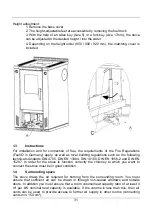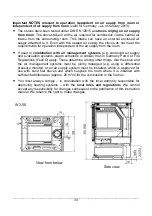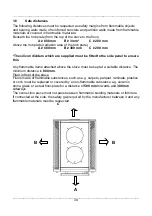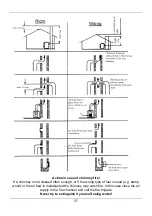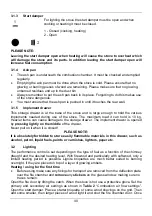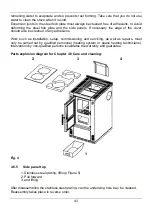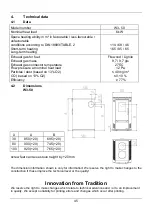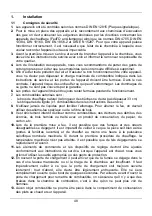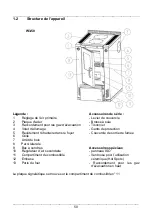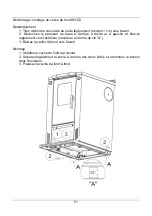
41
the fire is burning strongly and there is a sufficient base of embers, add more fuel and shut
the start damper off.
The first time the stove is lit it should be done “gently”, with a small amount of fuel, to allow
the stove parts to get used to the heat. The first time the stove is heated there may be
some smoke and an unpleasant smell. Make sure that the room is well ventilated (open
windows and doors) and heat for at least an hour at the maximum nominal heat load. If the
maximum temperature is not reached the first time the stove is heated, then there may be
further unpleasant smells at a later date. Never throw pieces of fuel into the fire chamber,
but place them, as otherwise the lining may be damaged.
The loading door (fire door) must always be kept shut when the stove is in use.
It may only be opened when lighting, filling up or cleaning the fire chamber.
PLEASE NOTE:
If not working correctly, or if the chimney is not drawing properly, smoke may
appear when the fire door is opened. It is very important to only open the fire door
slowly, initially just a crack, then wait a few seconds before opening fully. In
addition, before opening the fire door to top up the fuel, make sure that only glowing
material is present: there must not be any visible flames.
3.3 Cooking
and
heating
Whenever the stove is being used for cooking or heating the start damper must be kept
shut.
For optimum cooking on the hob plate you are recommended to use pans with a flat base.
The hottest area is in the centre of the plate, so this is the best area to use to heat up a
pan quickly. The edges of the plate can be used to keep food warm. To get a faster heating
up time (to boiling point) we recommend using thinly chopped softwood.
The hob plate must not be overheated as this will damage the stove but not help in any
way with cooking.
3.4 Closing
down
Close the primary air regulator (Table 2).
Let the embers burn out and leave the stove to cool down.
Once the stove is cold, empty and clean out the fire chamber and ash pan!
3.5 Notes
on
heating
A properly adjusted secondary air flow ensures that any combustible elements in the flue
gases are burned off. This means they are burned in a way which reduces the smoke and
soot released into the environment. it is always possible that the
window glass will
become dirty
and this does
not mean
there is a
malfunction
.
If you use your stove in the spring or autumn, you must check the draw of your chimney
first, as if the outside temperatures are high this can drop off substantially. To do this hold
a burning match in the fire door when it is partially opened. If the flame is not clearly drawn
inwards, then you first need to light a starter fire. Do this by briefly burning some wood
shavings in the stove or the cleaning opening of the chimney itself.
The grid must be cleaned before placing any fuel on it, in order to ensure a good supply of
air to the burning material. The ash pan must be emptied regularly, when it is cold. If the
stove is still hot, use the gloves provided. Please make sure that no glowing embers are
put into your dustbin.
Take care that the ash pan is pushed in until it touches the rear wall.





